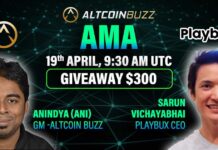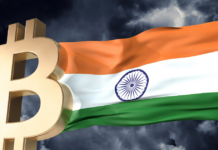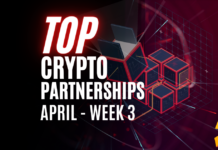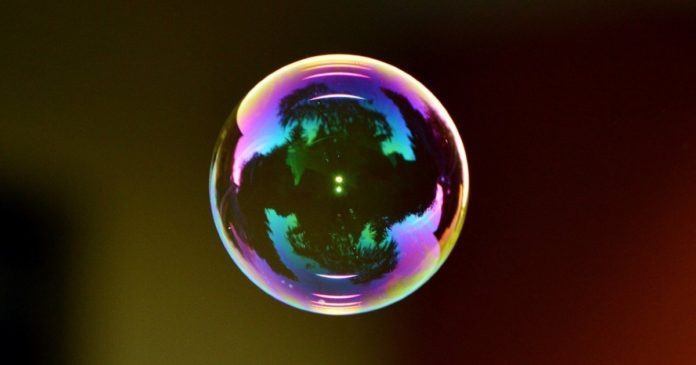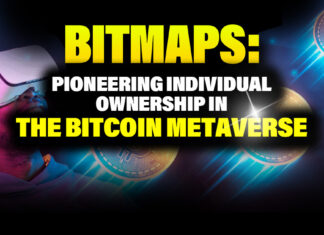In the last six months, non-fungible tokens (NFTs) have outgrown almost all other cryptocurrency segments. The world observed digital art being sold for eye-popping sums. For instance, Mike Winkelmann, a digital artist with the pseudonym Beeple, sold his artwork called “Everydays: The First 5000 Days” for $69 million at Christie’s. CryptoPunks, another digital art collection created by Larva Labs, is white hot with one NFT (a pipe-smoking alien) selling for $7.5 million.
If these numbers tell us anything, they say that non-fungible tokens are reaching unprecedented levels. As NFTs begin to storm the crypto space, CNA, Singapore’s dedicated news and information radio station, sat down with Altcoin Buzz CEO Shashwat Gupta to understand the NFT mania.
Chew Wui Lynn and Stanley Leong led the interview under CNA’s Money Mind’s Dollars and Cents segment.
Stanley Leong: I’m talking about my tweet earlier in 2011. Is it worth anything?
Shashwat: I think the value is a factor of what people perceive it to be. If you can create value out of your tweet, and if people think it has value, it can be worth something.
We need to look at it from the collector’s interest perspective and a speculator’s point of view.
If we compare it to what happened in the dot com boom initially, the internet had way more money for a project happening on it because there were only a small number of projects utilizing the space.
Similarly, this is just the beginning of the NFTs. It’s time to observe the space rather than spending too much money on buying NFTs.
Chew Wui Lynn: Please help us understand how non-fungible tokens work.
Shashwat: Fungibility is a simple concept wherein one dollar is equal to one dollar. For example, if I give you a dollar, and you give me back one because they both have the same value. Non-fungibility adds a layer of differentiation, where one dollar, maybe, is of a different value than another. Certainly, it doesn’t apply to dollars.
But, let’s assume a gaming company creates two items. One is serial number one and the other is serial number two. Two players participate in this game’s competition. The second player wins it, and now his gaming item suddenly has more value. Though the game has two identical in-game items, a collector can differentiate the winning player’s item based on its serial number, history, and use case. That’s where non-fungibility comes into play.
NFTs add the layer of ownership, which can then add the layer of possession and transferability. Moreover, other financial tools can be built on top of it.
The key is being able to own it.
Stanley Leong: Is this a new concept?
Shashwat: Fairly new! The word NFTs came around in 2017. At that time, we saw a lot of interest in what was exciting, and then it started as CryptoKitties. Then NFTs became something when people spent a lot of time and effort to create infrastructure, to make sure these things happen.
It’s still early days, but the concept of ownership isn’t new. In fact, Altcoin Buzz created its first NFTs in 2018.
Chew Wui Lynn: So, let’s assume Stanley wants to sell his tweet. How would he turn that tweet into an NFT?
Shashwat: There are multiple tools with which Stanley can do this, like Enjin, OpenSea, and Rarible. What Stanley needs to do is simply set up his profile on either of these platforms and add his image to it and write a bit about it. Once done, he is ready to sell his first NFT.
Stanley Leong: What are NFTs good for besides tweets and digital artwork?
Shashwat: To begin that aspect, we have to simplify to an extent if there is an item that can be individualized and created into an NFT. It could be a digital item or a physical item, where it can work as a certificate of ownership.
At this moment, NFTs are merely an art sea of one-type things – mainly tweets or art. Eventually, it could be a lot of other stuff.
Stanley Leong and Chew Wui Lynn: Why would someone pay so much money for a digital asset that can be copied and that cannot be seen physically? What are the benefits of owning it?
Shashwat: The copying aspect is getting into the legalities of it. For example, you can make a replica of the Mona Lisa painting. But that doesn’t mean you own it. So, what represents the ownership is not representative on paper. What Jack Dorsey sold as an NFT is, actually, the ownership certificate of his first tweet. Does it have value or not is another question altogether. But the ability to own, transfer, and build value in non-fungible tokens is now possible.
Now, because not many people know how to do it, the guys who are creating it are getting popular.
Soon, when anyone can make it, and everyone has access to and understands NFTs, the good ones will have value, and the ones that are not popular won’t have value.
Chew Wui Lynn: Are NFTs just a fad or do you believe they can disrupt the art world industry?
Shashwat: You’re not wrong about the fact that, as of now, there is too much hype about NFTs. Speculators are more in the space than collectors. But, a lot of people are creating beautiful digital art instead of physical art. You can take prints of it, but that’ll be a replica. The actual certificate of ownership of that digital art has equal value as the certificate of the ownership of any other physical art. These concepts will take time to prosper, but it’s happening right now as we speak.
Stanley Leong: What will this mean for artists? Will they be able to better track their royalties?
Shashwat: Yes, this adds to the possibility of what can be done with this new technology. Right now, the artist doesn’t get anything after the first sale of his artwork. But, now there is a possibility of earning. The blockchain enables artists to create a smart contract, in which every time an artwork is sold to someone, a fraction of the fee will go to the original creator of that artwork. Artists can use such processes to create micro-economies for themselves.
These things don’t exist for now, but multiple projects are building better revenue models for artists and creators. It’s going to be exciting.
Chew Wui Lynn: There have been reports of scammers impersonating artists and selling their artwork without the artist’s knowledge.
Shashwat: Regulations and innovations grow as there is more interest from the people. Scams are common because the tech is new and people don’t have much understanding of NFTs. The point is to be aware; do not get into buying stuff that is not fully authenticated.
Unless there is a way to authenticate the image, it’s easier to scam-sell an art piece.
But till then, we are living in a not so refined NFT space.
Shashwat Gupta is the Founder & CEO of Altcoin Buzz. He joined the cryptocurrency space in early 2017.
Join us on Telegram to receive free trading signals.
For more cryptocurrency news, check out the Altcoin Buzz YouTube channel.



